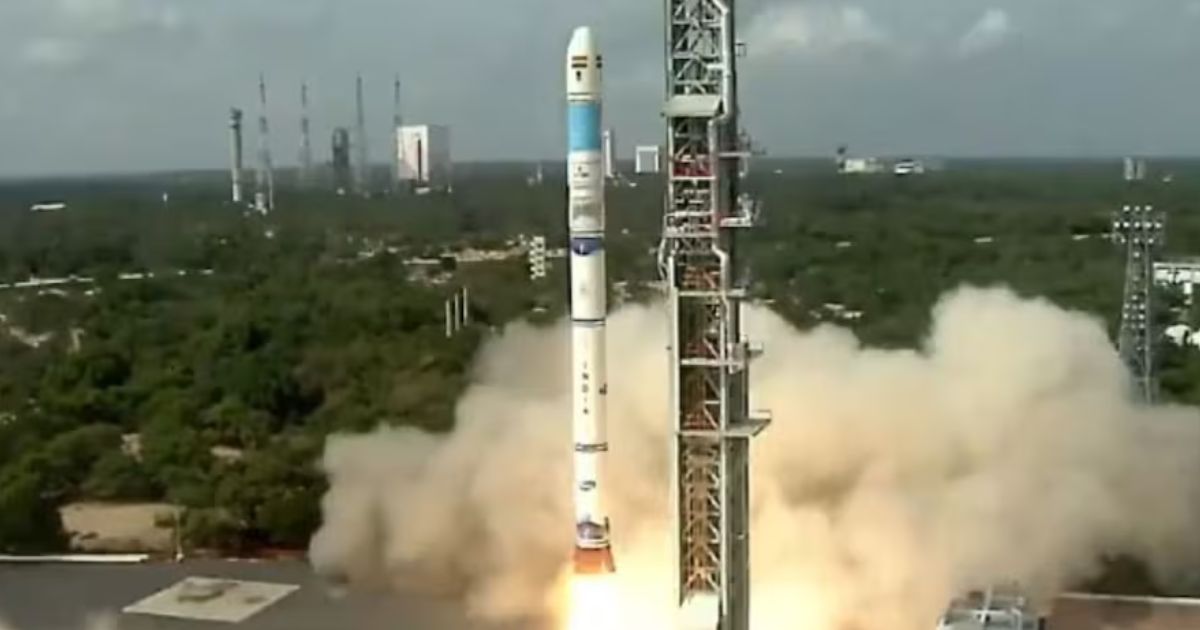Isro uses new satellite and launch vehicle technology for EOS-08 mission
17 Aug 2024

Indian Space Research Organization (Isro) on Friday launched its Earth Observation Satellite (EOS-8) using its latest Small Satellite Launch Vehicle (SSLV).
The third development flight of the ready-to-assemble spacecraft, SSLV-D3 was launched at 9:17 hrs from the Satish Dhawan Space Centre, Shriharikota, in Andhra Pradesh.
Built on the Microsat/IMS-1 bus, EOS-08 is also a developmental effort aimed at designing and developing microsatellites incorporating new technologies and creating payload instruments compatible with the microsatellite bus.
Besides the remote sensing GNSS-R the EOS-08 carries an Electro Optical Infrared Payload (EOIR) and the SiC UV Dosimeter.
The GNSS-R payload is capable of using GNSS-R-based remote sensing for applications such as ocean surface wind analysis, soil moisture assessment, cryosphere studies over the Himalayan region as well as detection of floods, and inland waterbodies.
The EOIR payload finds day-and-night applications for capturing images in the Mid-Wave IR (MIR) and Long-Wave IR (LWIR) bands, for satellite-based surveillance, disaster monitoring, environmental monitoring, fire detection, observing volcanic activity and monitoring industrial and power plant disasters.
The SiC UV Dosimeter can be used to monitor UV irradiance at the viewport of the Crew Module in the Gaganyaan Mission and can serve as a high-dose alarm sensor for gamma radiation.
The GNSS-R satellite weighs about 175.5 kg and generates power of around 420 W. It will operate in a circular Low Earth Orbit (LEO) at an altitude of 475 km with an inclination of 37.4°, and has a mission life of 1 year, according to Isro.
Prime Minister Narendra Modi said the successful launch of the EOS-8 satellite is a remarkable milestone, adding that the cost-effective SSLV will play an important role in space missions and encourage private industry.
EOS-08 incorporates an integrated avionics system, known as the Communication, Baseband, Storage, and Positioning (CBSP) package, which combines multiple functions into a single, efficient unit. The system, which uses off-the-shelf (COTS) components that are commercially available, as also evaluation boards, supporting up to 400 Gb of data storage. The EOS-8 satellite also incorporates a structural panel embedded with PCB, an embedded battery, a Micro-Dual Gimbal Antenna, an M-Phased Array Antenna, and a flexible solar panel.
The miniaturized design of the antenna pointing mechanisms helps achieve a rotational speed of 6 degrees per second and maintain a pointing accuracy of ±1 degree, which enhances communication capabilities.
The flexible solar panel offers improved power generation and structural integrity while a pyrolytic graphite sheet diffuser plate, which has a high thermal conductivity of 350 W/mK, reduces mass.
The EOS-08 mission also incorporates novel schemes that improves satellite technology through X-band data transmission. It employs SSTCR-based battery charging and bus regulation, sequentially.
All in all the EOS-8 mission is a major effort in indigenization and use of Nano technology in satellite systems.






















